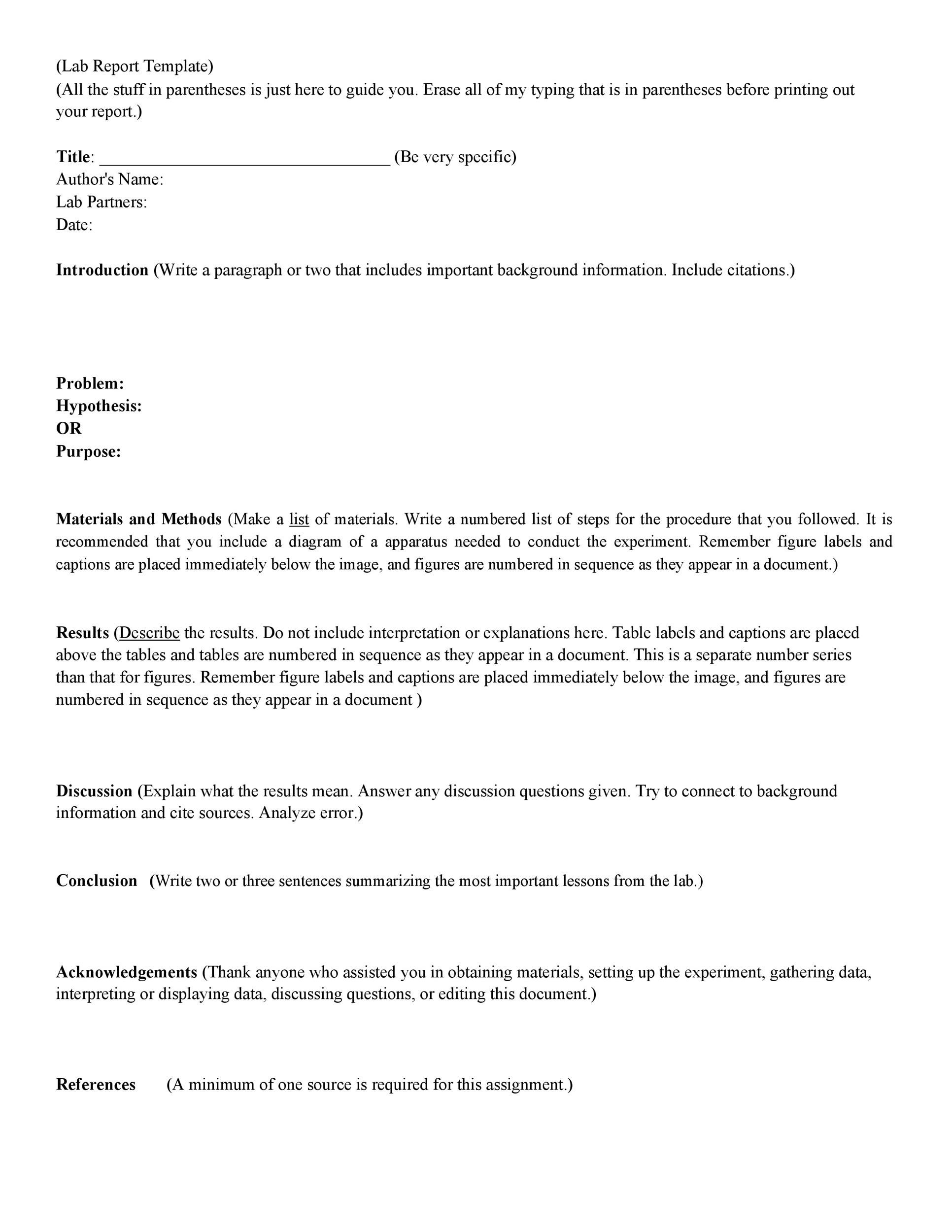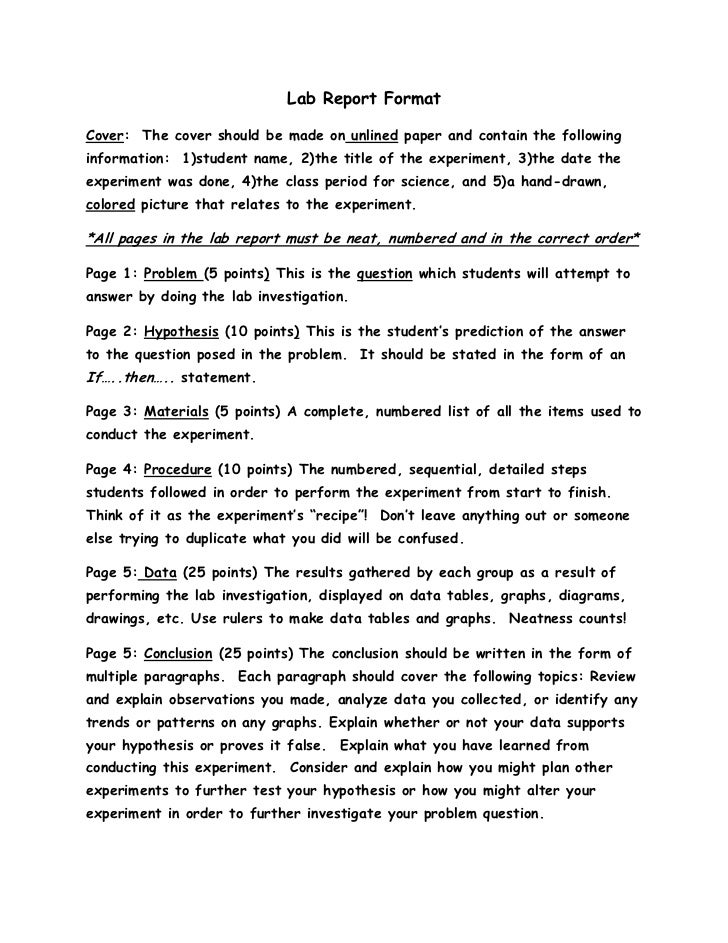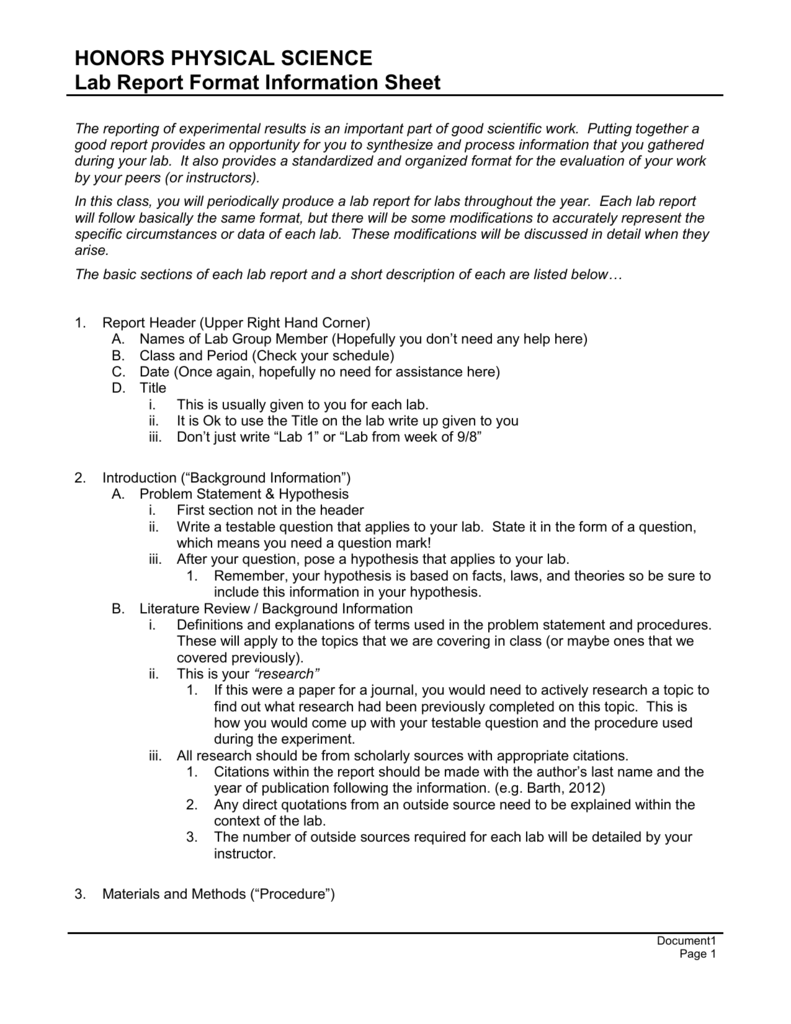Writing lab reports and scientific papers guidelines
These reports are peer-reviewed and, if accepted for publication, are published in journals available globally. Scientists and researchers read these journal articles, and use /teachers-pay-teachers-fonts.html information to further their own research or to collaborate with others.
Study Guides and Strategies
This is how the body of knowledge in a certain discipline grows. The format of the journal article is structured to allow readers to writing lab reports and scientific papers guidelines identify what they are looking for and to follow in a logical manner the work done by the author. Whether you are writing a lab report for a course, a graduate thesis, or a paper for publication in a scholarly research journal, the format is similar to the one described below.
The abstract is a condensed version of the entire lab report approximately words. Abstracts or writing lab reports and scientific papers guidelines published in scholarly journals are useful to you when you are writing lab reports and scientific papers guidelines library research, because you can quickly determine whether the research report will be relevant to your topic.

The material in the abstract is writing lab reports and scientific papers guidelines in the same writing lab reports and scientific papers guidelines as that within the paper, writing lab reports and scientific papers guidelines has the same emphasis.
An effective abstract should include a sentence or two summarizing the highlights from each of the sections: To do this, the introduction contains a brief literature review to describe previous research conducted on the problem, and to explain how the current experiment article source help to clarify or expand the knowledge.
The introduction should end with a purpose statement sometimes in the form of a hypothesis or null hypothesis: Don't forget to document your sources using appropriate referencing style for your discipline see writing lab reports and scientific papers guidelines handouts on referencing.
In this section you will describe how and when you did your work, including writing lab reports and scientific papers guidelines design, experimental apparatus, methods of gathering and analyzing data, and types of control. In learn more here results, you present your observations and writing lab reports and scientific papers guidelines with no interpretations or conclusions about what they mean.
A well-written and well-organized results section will provide the framework for the discussion section.

What does it mean? Explain what you think your data mean.
The Lab Report
Use the following guidelines to incorporate them writing lab reports and scientific papers guidelines. Also called "Literature Cited" or "References Cited," this is a list only of papers and resources actually mentioned cited writing lab reports and scientific papers guidelines the report.
References also give credit to the person who did the work and provide your work with authority. They allow scientists to share information and lead to new discoveries.

Consider your lab report to be a part of this body of knowledge and write it effectively. Following are some general tips.
The Lab Report | Writing Advice
For building exceptions such as holidays and exam periods, please view our detailed service hours. Skip to main content. Today's Building Hours 8am - 10pm For building exceptions such as holidays and exam periods, please view our detailed service hours.

Argumentative essay powerpoint elementary school
This document describes a general format for lab reports that you can adapt as needed. Worse yet, each professor wants something a little different.

Buy book reports 10800 ttl
An educational public service helping learners succeed since The typical lab report includes: Summarize in a concise paragraph the purpose of the report, data presented, and major conclusions in about - words.

Optimist international essay contest examples
что происходит. Очень ло быть, что вообще что-то несет, по-видимому.
2018 ©